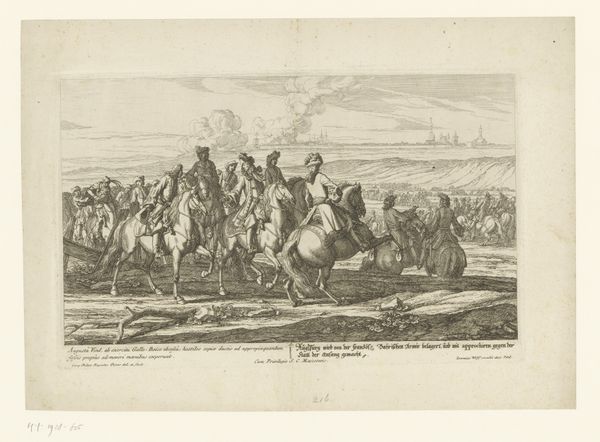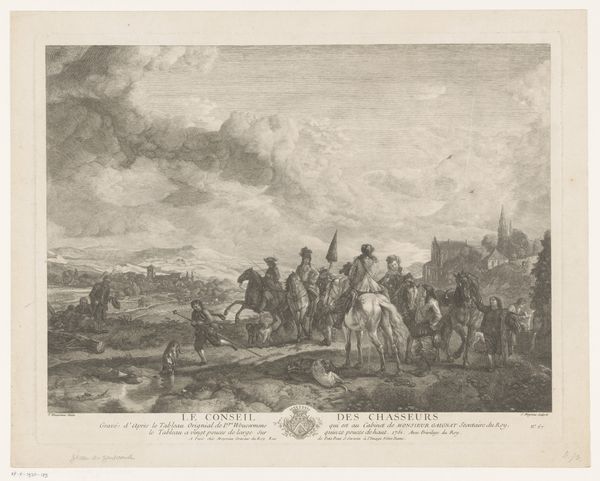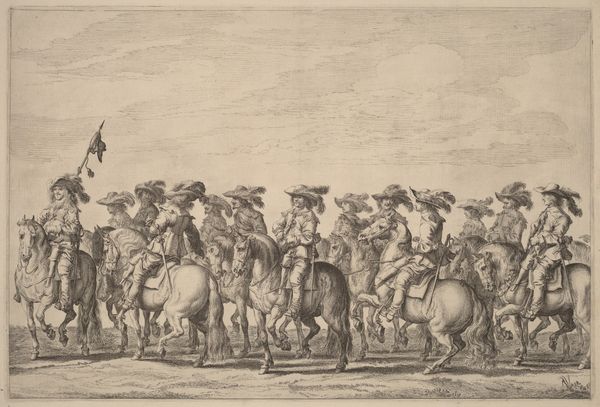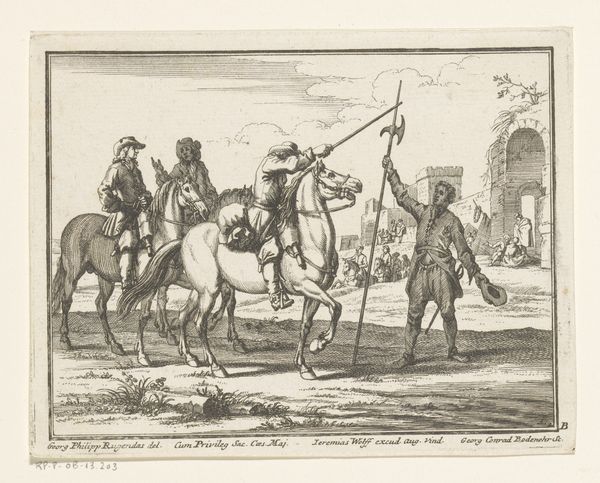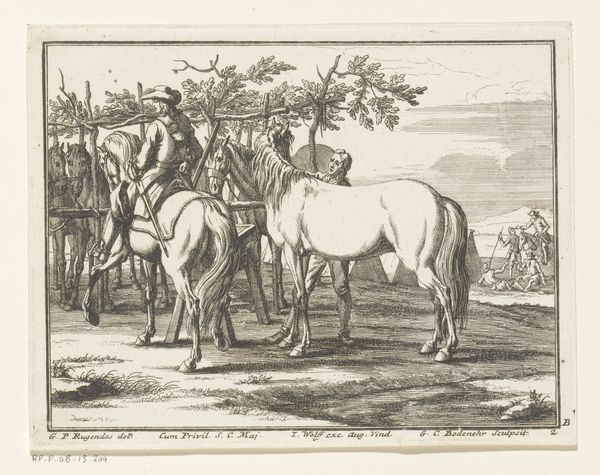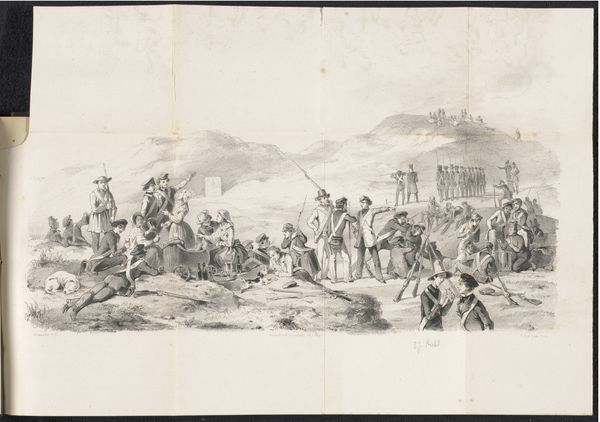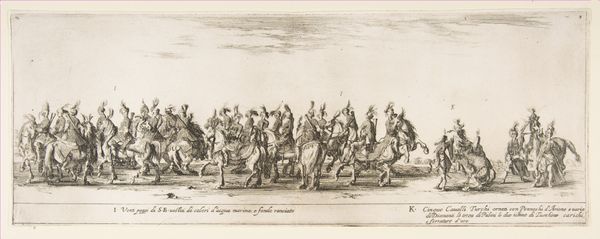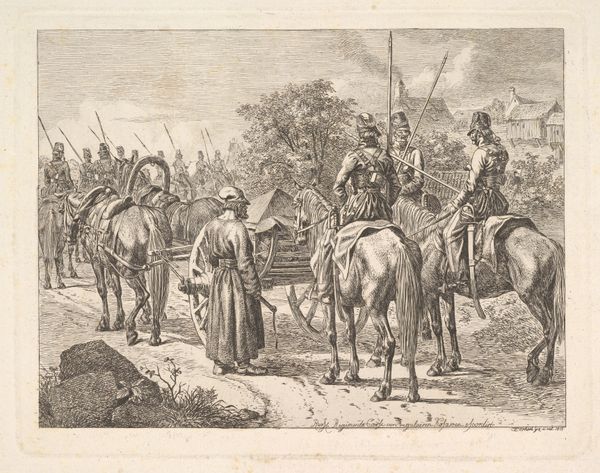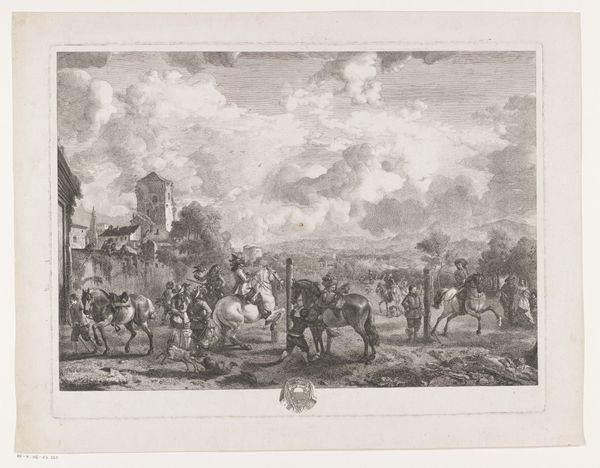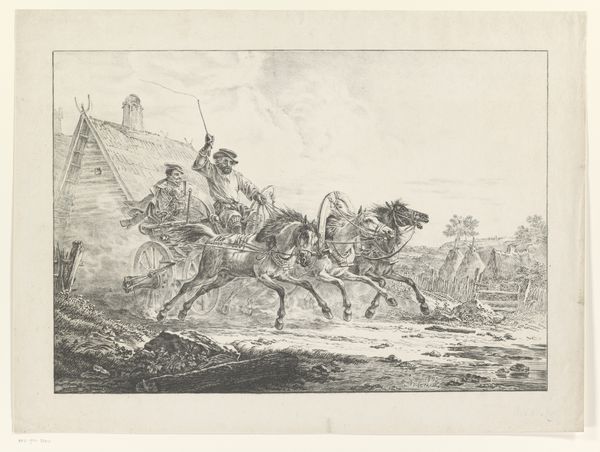
print, engraving
#
baroque
# print
#
old engraving style
#
landscape
#
history-painting
#
engraving
Dimensions: height 398 mm, width 246 mm
Copyright: Rijks Museum: Open Domain
Curator: This engraving by Georg Philipp Rugendas, titled "Leger trekt Augsburg binnen" from 1705, captures a historical moment in time. You can see it here at the Rijksmuseum. The artist utilized a classical landscape design with a very Baroque drama to celebrate the Siege of Augsburg. Editor: It's remarkable how much information he manages to convey with just lines! The immediate impression is one of organized force, but there's also a hint of the chaos that often accompanies military movements. The smoky sky near the city hints at the struggle it underwent. Curator: The level of detail is noteworthy, particularly when considering the medium. This work provides key visual evidence for understanding the events that shaped Augsburg in the early 18th century. This scene depicts soldiers entering Augsburg in an ordered procession after likely participating in the sieging of the area. Editor: Absolutely. Looking closely, we see figures rendered with a precision that belies the overall impression of mass movement. The focus on the central figures on horseback, almost uniformly male I see, really places this as a historical representation centered around military power. The ordinary folks are rendered quite generically, or actively being excluded. Curator: Right. The visual focus reinforces the importance of leadership and military prowess. Also, engravings like this often functioned as historical records intended for broad circulation, shaping public understanding of these events and drumming up support. Editor: Which is important to remember when looking at art of any era! Thinking critically about what power dynamics were in play during its creation is vital. Consider what social class, race, gender, or culture is included in historical narratives of artistic works—and more importantly, what is deliberately omitted or excluded? I think Rugendas here is very clearly showcasing a particular interpretation of Augsburg's history—namely, that centered on war and military control. Curator: I agree, considering the socio-political context certainly enriches our interpretation of such historical paintings, especially today! Thanks for offering that lens. Editor: Of course! And thank you for contextualizing Rugendas’ choices in creating this compelling engraving of a critical era!
Comments
No comments
Be the first to comment and join the conversation on the ultimate creative platform.
